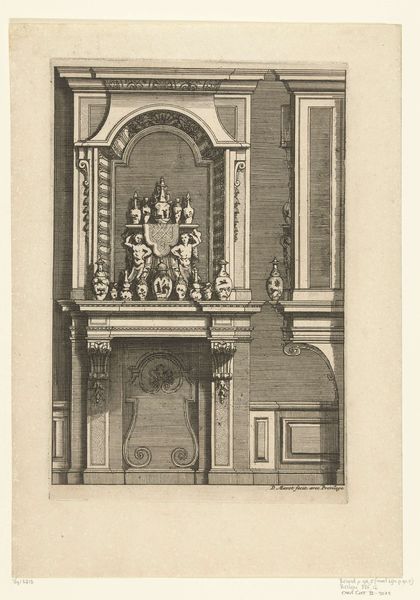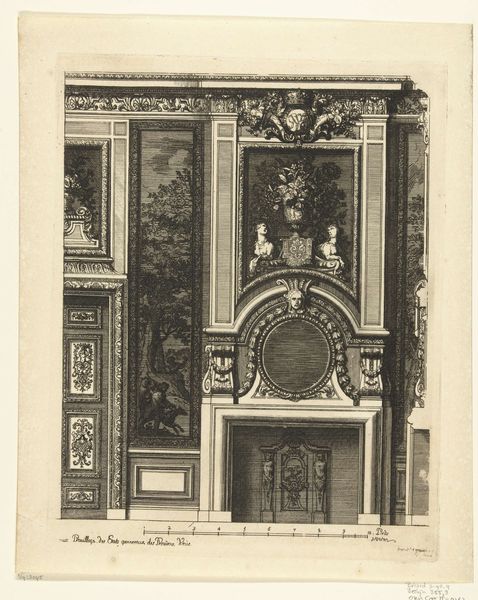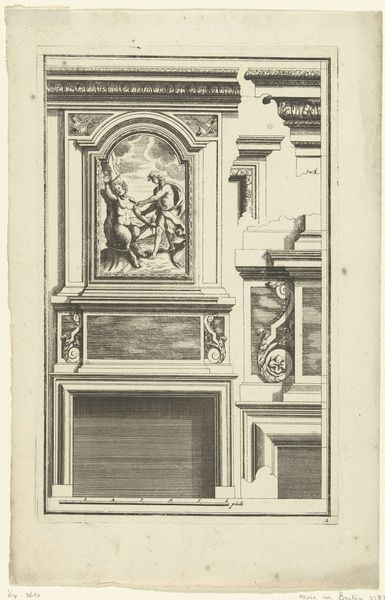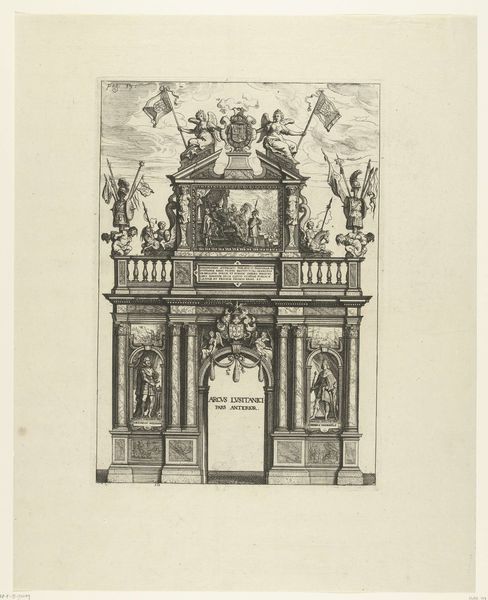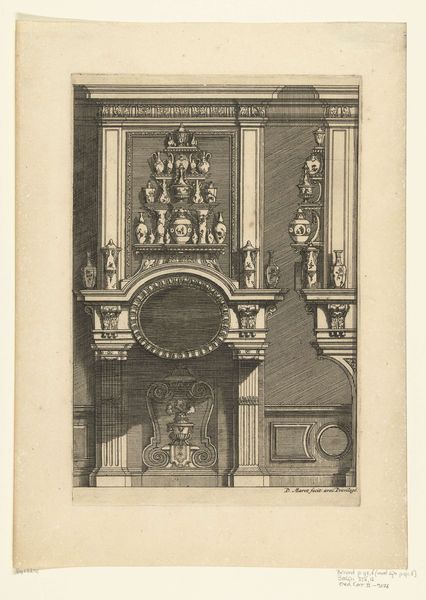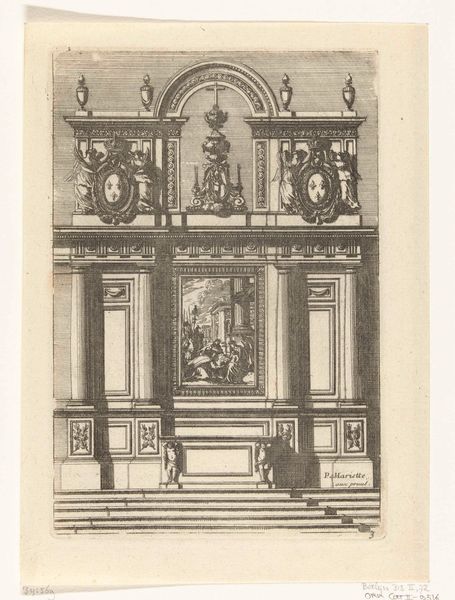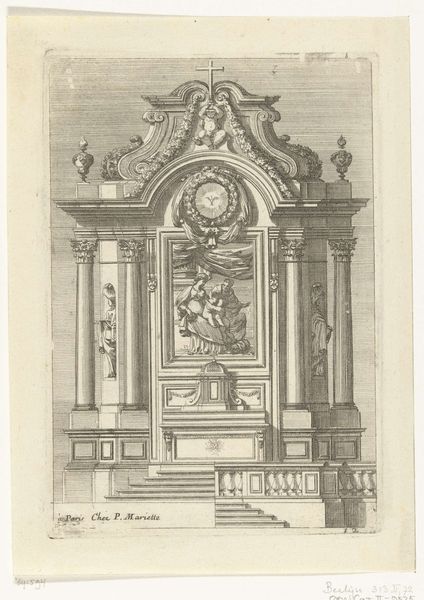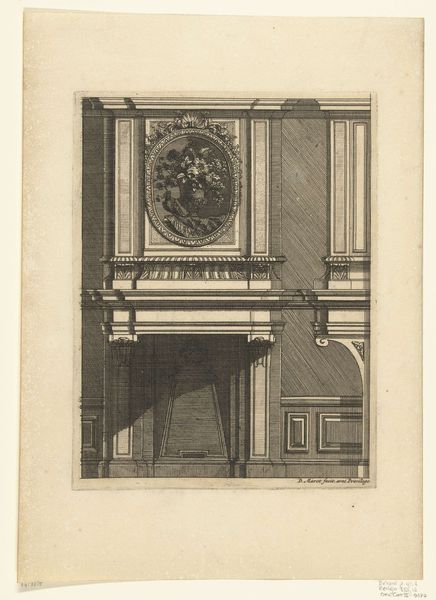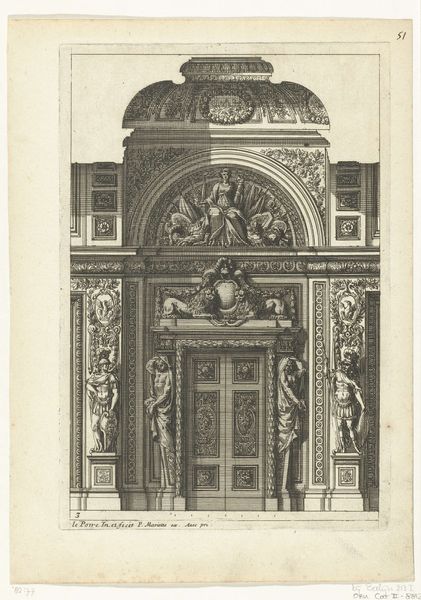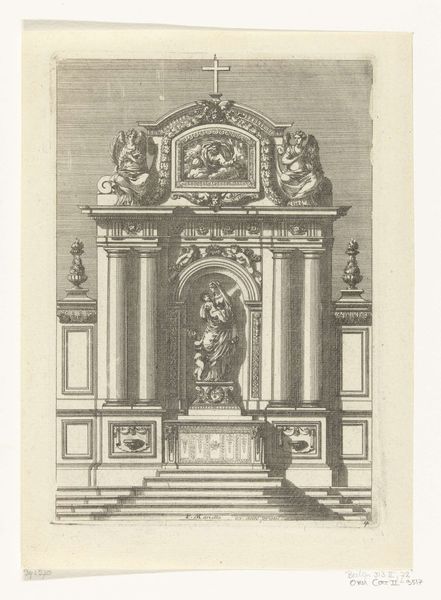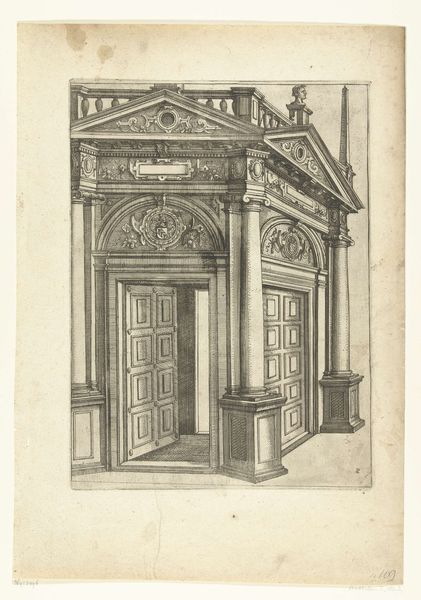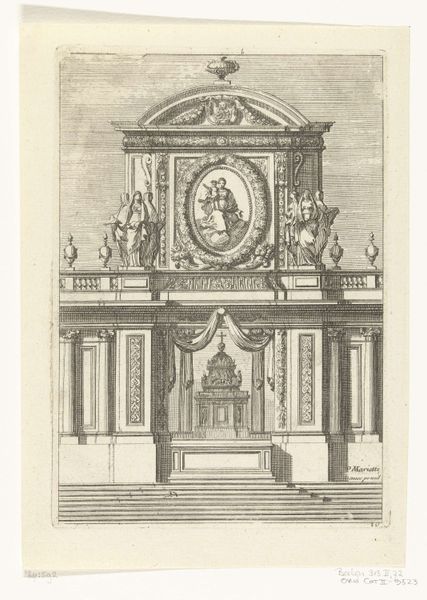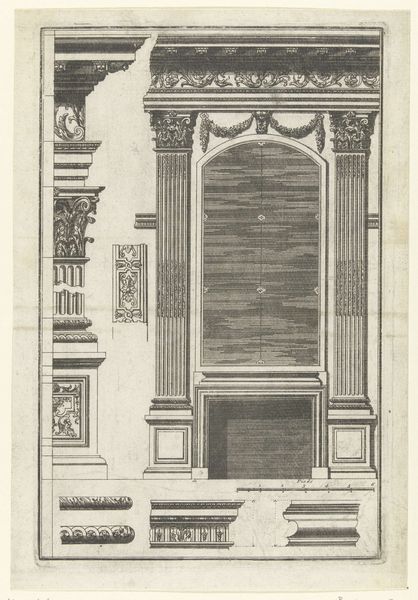
Dimensions: height 231 mm, width 172 mm
Copyright: Rijks Museum: Open Domain
Curator: This etching, known as "Onderboezem", created before 1800, offers us a glimpse into interior design. It's currently housed in the Rijksmuseum, and attributed to Daniël (I) Marot. Editor: The starkness of the lines makes the piece feel quite austere, almost architectural in its rigidity. Yet the subject—a fireplace and paneling—suggests domestic comfort. It’s an interesting dichotomy. Curator: Indeed. Consider Marot's process here. As a design, this wasn't meant as a precious object in itself but as a reproducible model, to influence the material reality of interior spaces, labor, and consumption by a larger clientele. The etching medium enabled mass production, disseminating baroque design principles beyond the aristocracy. Editor: But let's also consider what's *in* the design. The scene depicted above the firebox—some kind of offering or sacrifice—is rendered with precise detail. Even the vases are topped with evocative classical sculptures, contributing to a symbolic language of wealth and power. This connects the patron to cultural ideals rooted in antiquity. Curator: And we mustn't ignore the material translation at play here. The image simplifies complex materials – stone, wood, plaster – into lines on paper, allowing builders and artisans, and potentially the commissioner, to envision a cohesive interior scheme, influencing construction materials. The fireplace mantel isn't merely decorative; it's a key structural component, influencing the building's infrastructure through a circulation of visual data that affects the consumption of goods and services. Editor: Even that blank space in the firebox takes on meaning. It's a void that the fire will fill, transforming cold, hard materials into warmth and light, symbolic of transformation and domestic ritual. Think about the psychological weight of hearth and home as a concept extending back into history. Curator: Ultimately, this etching functions as a node within a much larger network of making: from the mines where the stone was quarried, to the forests that supplied the wood. This design enabled particular building practices and resource management in line with baroque taste. Editor: I agree; seeing how Marot incorporates classic iconography within an idealized home, what could be sterile line work is enlivened and becomes so inviting. The material gives lasting form to resonant symbols, giving emotional as well as artistic weight.
Comments
No comments
Be the first to comment and join the conversation on the ultimate creative platform.
